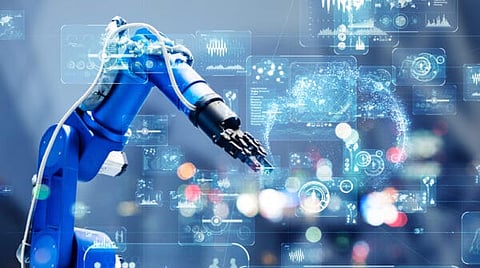

While numerous robots are intended for automating tasks, there are others that are intended to augment human capabilities rather than automate tasks. Robots are good at performing repetitive tasks on factory floors today, however, cutting-edge robotics will go past automation use cases. The next challenge is someplace in the middle of where we need to have robots that can settle on decisions all alone independently, yet additionally, have the option to have people tuned in.
Automation is obviously a top reason behind organizations considering the utilization of robotic innovation within their business processes. Nonetheless, it is essential to understand that, while numerous robots are intended for automating tasks, there are others that are designed to increase human abilities as opposed to automate tasks. We will, in general, consider robots either robotic arms or autonomous mobile robots operating autonomously in business settings.
Such devices regularly center around improving productivity and effectiveness in business operations. Then again, there are a few components of robotic technology that are centered around improving human security or giving humans increased strength, stamina, or accuracy.
In any case, what is, maybe, all the more exciting is the opportunity that robotics gives a democratized competitive landscape for manufacturers of all sizes. Small and mid-sized manufacturers are putting resources into robotics technology at a higher rate than their companions in different enterprises, as indicated by the Oxford Economics study "The Transformation Imperative for Small and Midsize Manufacturers." And this pattern will turn out to be progressively articulated throughout the following two years, as developing organizations unquestionably close the adoption gap among themselves and their bigger adversaries.
By including only a couple of robots one after another, smaller producers are setting up a triumphant establishment for giving the individualized offerings and services customers expect. All the more critically, they are cultivating a working environment culture that improves the ability and aptitude of each employee.
One of the most clear utilizations of robotic technology that is intended to expand human abilities as opposed to automate tasks is in the region of surgical robotics. These devices are intended to be physically worked by a surgeon while expanding the abilities of the surgeon. One of the most broadly known instances of robotic technology for surgery is the da Vinci robot by Intuitive Surgical. The innovation permits a surgeon to remotely work the robot utilizing a 3D top quality vision system as well as various automated arms, each cable of being equipped with an alternate surgical tool.
Getting robots to the business procedure doesn't really imply that employees will vanish. Quite the contrary, job titles and duties should be rethought and, in all likelihood, raised. Via automating monotonous and potentially hazardous tasks and giving the data and abilities required to get work done well, employees can be retrained to work alongside robotics and do their jobs better and safer.
Robots will work together with people to unravel immediate social problems across domains, for example, industrial safety, healthcare and disaster relief. In industrial safety, for instance, robots can be deployed in distant areas to maintain public infrastructure.
According to Vijayakumar, Director of the Edinburgh Centre for Robotics, "We face huge difficulties with regards to keeping up our foundation, for example, underground sewerage systems. We will find a good pace where it is genuinely inconceivable for us to take a look at the safety of these things." In any case, it could set aside some effort to arrive even with the current pace of technological development, on account of the vulnerabilities of this real world, and the pervasiveness of noise and sensors in decision-making.
"All things considered, we need to truly find a workable pace where we can exploit the best of the two universes," he said. "Robots are truly adept at performing exact movement, while people are generally excellent at contextual decision-making."
Robots embedded with sensors permit the provider to screen the output capacity which opens up a completely progressively affordable approach to optimize working capital. As opposed to making a one-time, heavy buy and pursuing a month to month charge for on-call service, companies can use a service-level agreement with the provider that permits usage-based billing without owning the actual robot.
Affordable, connected, intelligent, and adaptable robotics are opening the door to an unprecedented opportunity for small and midsize manufacturers. However, despite the fact that accessing and actualizing the innovation may appear to be clear, automating everything is never the appropriate answer. Costs will step by step increment to wild levels, particularly when one piece of the procedure breaks and triggers a glitch down the whole line.
To catch the full value of the opportunities presented by new robotic systems, organizations will consistently require employees to help guarantee the operation runs at top performance and adjusts for customer demand, market shift, resource volatility, and business strategy. Robotic technology keeps on improving bringing about new and inventive manners by which robotics is improving business procedures and helping with improving human performance and wellbeing. In this way, whenever you consider robots, think about the role of technology past automation.
Join our WhatsApp Channel to get the latest news, exclusives and videos on WhatsApp
_____________
Disclaimer: Analytics Insight does not provide financial advice or guidance. Also note that the cryptocurrencies mentioned/listed on the website could potentially be scams, i.e. designed to induce you to invest financial resources that may be lost forever and not be recoverable once investments are made. You are responsible for conducting your own research (DYOR) before making any investments. Read more here.
